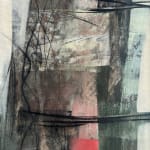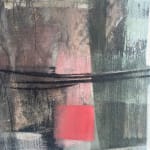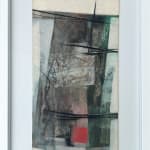Alexander MacKenzie 1923-2002
Framed: 66cm x 39.7cm (26 x 15.6 ins.)
Further images
Provenance
Directly from the artist and thence by descentAlexander MacKenzie painted relatively slowly, usually on gesso coated boards or panels (as with Red Serpentine, 1961) so that he could scratch back and over-paint the surface repeatedly. The artist imposed a high standard upon his output and many works that fell short were destroyed. MacKenzie was acknowledged as an important and distinctive figure amongst the St Ives Modernists and was represented by the auspicious Waddington Galleries in London where he had successful one-man exhibitions in 1959, 1961 and 1963, and the Durlacher Galleries in New York with two one-man exhibitions in 1960 and 1962. (Durlacher also represented Ben Nicholson, Barbara Hepworth and John Wells). David Bowie's collection of modern and contemporary art included a remarkable 11 works by MacKenzie.
Red Serpentine is a striking dark red stone found at the foot of the Lizard Peninsula, Britain's most southerly point. Kynance Cove is particularly famous for its exposures of this striking rock, and good examples of both red and green serpentine are found at the bottom of the cliff at Kynance and within a natural tunnel to the beach. It's likely that MacKenzie was inspired by this beautiful part of South Cornwall in Red Serpentine, and it is easy to read the painting as an abstraction of the cliffs at Kynance Cove with its large serpentine boulders and rock formation at its base.









